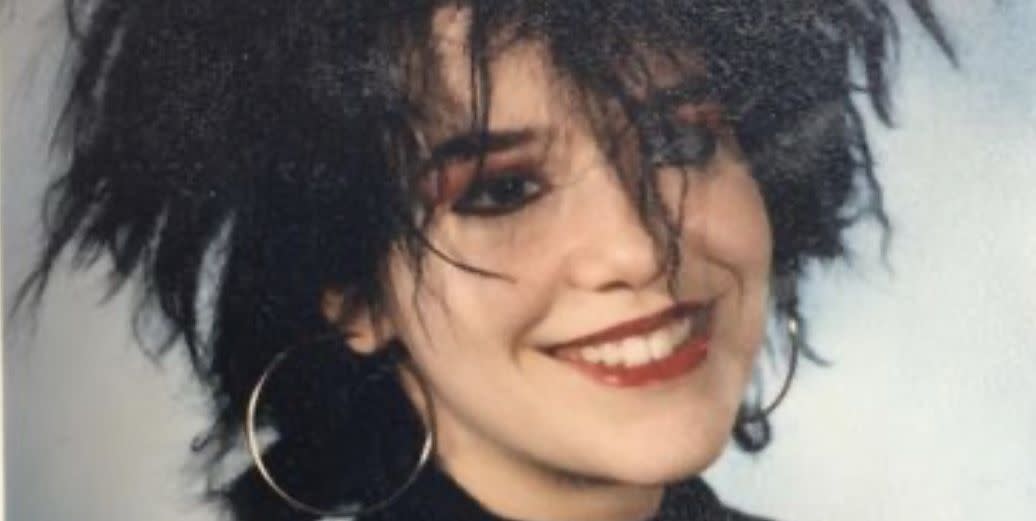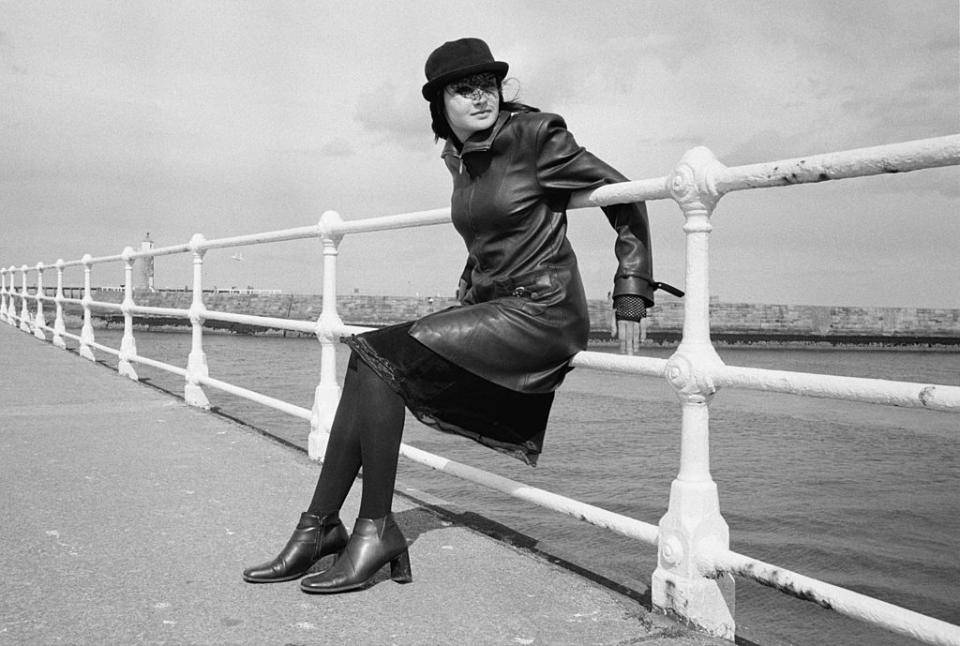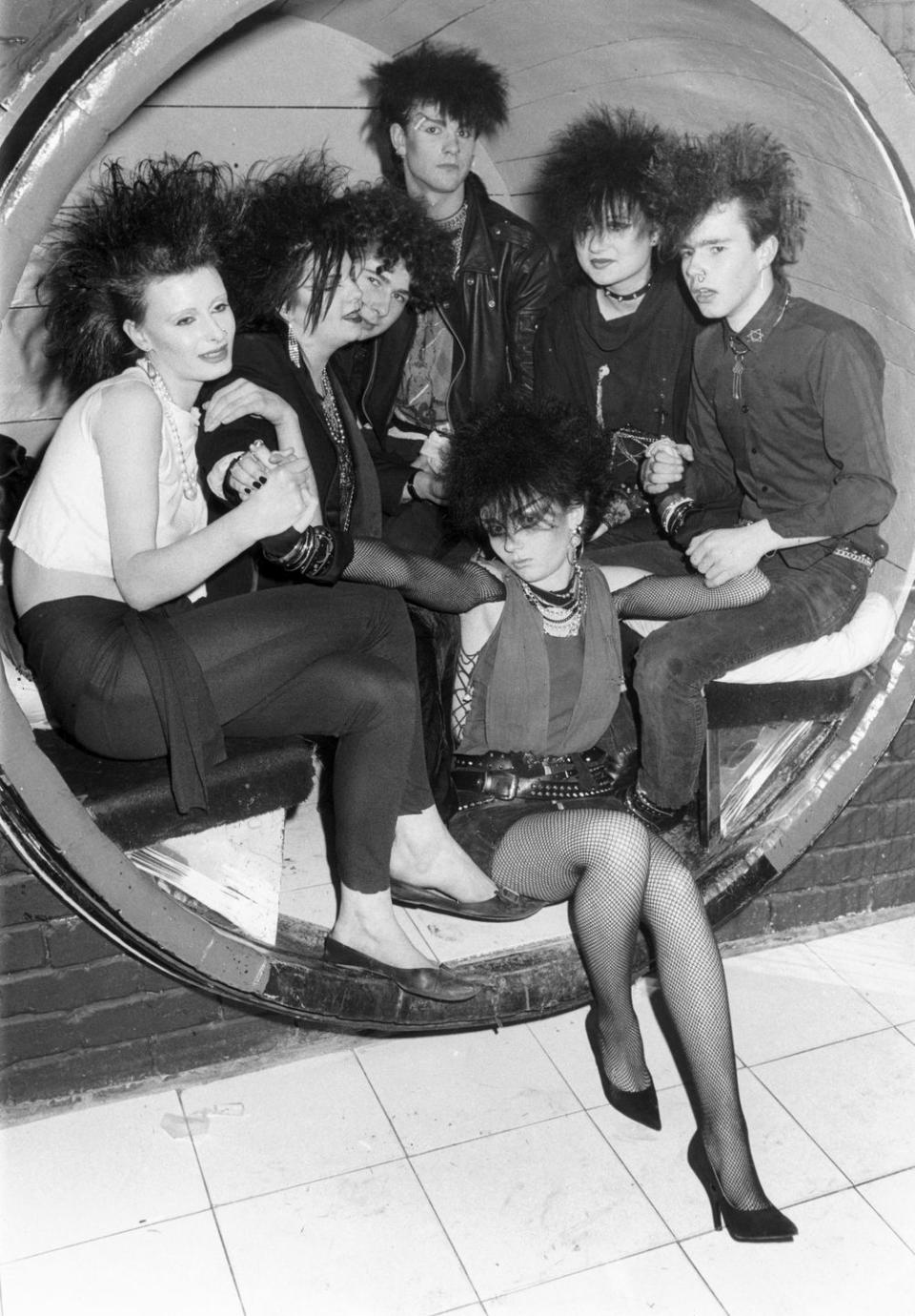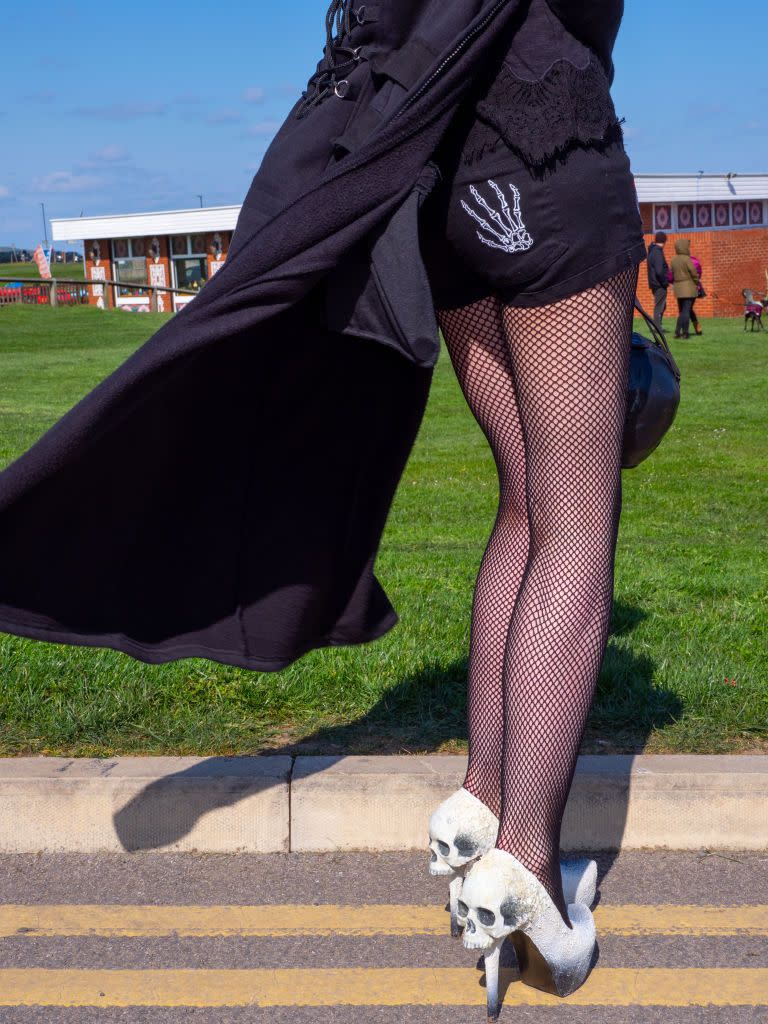I Am a Goth, and I Am a Mom, and I Am Proud

The lineup announcement for the 2022 Cruel World Music Festival put my fellow Gen X besties into a tailspin. “Is this real?” The texts poured in. “Is this a joke? This looks like my best 1987 mixtape!”
The lineup was amazing enough to invite disbelief: Bauhaus? Their lead singer, Peter Murphy, is credited with ringing in goth as we know it with the first reverberating vocals of their vampire classic, “Bela Lugosi’s Dead.” Morrissey? Though many fans have turned their backs on the mope-rocker for his baffling anti-immigrant stance, many more have tucked their heads into the sand to hold onto the moody, disaffected lyrics that so explained our teenaged selves to us. Christian Death? This obscure number had pride of place on my own leather jacket, their logo painted in gold leaf above the lyrics “Believers of the unpure / Kiss the past / This is where we belong.”
The Cruel World Festival, set to take over a golf course in Pasadena in May, 2022, was where we, the goths, belonged. No matter that goth, since its inception in the late 1970s, has gone through so much morphing and spawned so many subgenres that they’re scarcely a cognizant “we” at all. If I call myself a goth—me, a tattooed mom of 52, clad today, as most days, in a colorful dress, my bobbed hair a natural, neutral brown—and the ethereal wavers, with their corseted gowns serving up shelves of heaving cleavage, are goth; and the bubble goths, in their Sanrio hairdos and pink tutus, are Goth; and the corporate goths, in their jewel-toned officewear and dark makeup, are goth, what the hell even is goth anymore? Is it a relevant cultural movement, or a cringy nostalgia trip? Am I a sad, middle-aged mom trying to recapture a lost shard of youth, or am I, at my core, a dark-hearted goth longing to reconnect with my ghouls?

Goth has always been a complicated subculture. Inspired by the Victorian romantics, who were in turn inspired by medieval architecture, it’s derivative squared. Goth as we know it slinked from the ashes of punk, giving that harsh rebellion some velvety aftercare. It held onto the shock value, but introduced haunting melodies, a hint of the supernatural, the last laugh of ennui, entropy, and decay. If punks had been all fired up about having no future, goths calmly sipped some opium tea and maintained none of us humans has ever had much of a future, what with death always lurking around the corner. If punk claimed anarchy as its philosophical mascot, goths were all about the existential. If punk was a punch, goth was a swoon.
In the 1980s, I was a teenager, living in a crummy, downbeat New England town. All around me were the descendants of those who’d killed the witches—small-minded people who made their racism, their homophobia, their general lack of empathy known. Reared in the Catholic Church, an eye for a certain type of beauty was being nurtured within me—Baroque and grisly, starring a half-naked, half-dead man who demanded obedience and worship, attended to by severe women in black cloaks and somber men intoning gravely in an atmosphere of gilt and velvet, chipped plaster and gleaming, dark wood. How could I not have turned out goth?
At 17 years old, my hair was blue-black, or at least that’s what it said on the box of dye I’d bought at the drugstore. I’d teased it into a tarantula tangle, tendrils reaching for the sky like a thing alive. I creamed my face in Clown White, theatrical makeup meant to make me look as undead as possible (being nothing but a puck of petroleum in a circusy tin case; I followed up with a dusting of baby powder to soak up the grease). Paired with Elvira-brand black lipstick purchased in bulk at Halloween time, and some tubercular red eye shadow, I looked absolutely incredible. At least, I thought so. My environs—not so much. The Italian American girls at St. Rose High accused me of worshipping Satan and attempted to beat me up after school; the nuns in charge accused me of asking for it with my “distracting” hair and occult symbols pinned into the plaid of my uniform, and eventually kicked me out. Strangers on the street spit at me, or worse. Every day, someone—on the street, on a bus, on a train, driving past in a car—offered their unkind opinions of my appearance.

As if by magic, I found my people. Turning a corner in Boston one day, I came upon the façade of the Boston Public Library—Gothic in its own right, with its patina statues and stoic, gray stairs. The spot was teeming with goths! A mass of tangled, dark hair and thrift store lace dresses, pointy leather boots imported from England, and velvet capes bought at that vintage store in Cambridge, makeup as ornate and extravagant as a Klimt painting (an artist we all knew thanks to Siouxsie biting his gilded style for A Kiss in the Dreamhouse). Today, this look is called—respectfully—trad goth by the younger generations of goths who are putting their own spin on the subculture, innovating musically with new bands such as Drab Majesty and Cold Cave, and breathing new life into the classic attire of big hair, black clothes. Having been formally accepted as a legitimate style by the gatekeepers of fashion—Alexander McQueen’s iconic 1996 church-side runway show announced goth’s bum-rushing of the hallowed environs, and Valerie Steele’s 2008 FIT exhibition, “Gothic: Dark Glamour,” made it official: Goth was not just fashion, but high fashion. And how could a subculture that literally put their safety at risk for the sake of an elevated look be anything but?

Tragically, I missed Cruel World 2022; COVID got me, and I spent the day languishing in bed—very goth if you think about it—scrolling through online clips of Bauhaus’s Peter Murphy in a bejeweled crown, howling and growling and accepting his rightful place as red-hot granddaddy of goth. My cold, dark heart leapt, however, at the news of a 2023 Cruel World redux; planning began and has maintained its fevered pitch: friends coming to town, matching goth tattoos scheduled, and, of course, what will we wear? (I’m eyeing some ruffled Batsheva frocks.) I’m ready to experience the comradery, the strange connectivity between me and an arena full of strangers, all of us bound by our love of this ephemeral, ever-shifting subculture. I’m anticipating the near-psychedelic pleasure of being wrapped in the music—the rush of sense-memory triggered by the songs of my past, and the inspiration of finding new bands to love. What does disaffection and darkness sound like today, and what is it wearing? With our tubercular planet and medieval-minded politicians, goth remains—perhaps sadly—relevant. But perhaps, it will always be, as we humans will always have our shadow sides, the truth of our mortality to fear and embrace. I guess, at the end of the day, I’m a middle-aged mom and an eternal goth. Goth is dead, long live goth!
You Might Also Like

